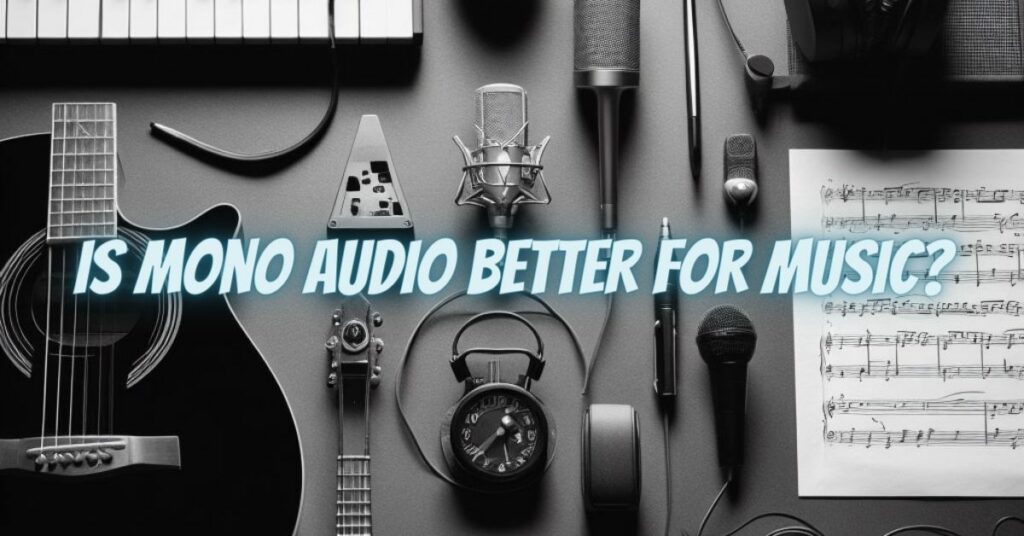The world of music has long celebrated stereo sound, with its ability to create rich soundscapes and immerse listeners in aural splendor. But is mono audio better for music? This question often sparks debates among audiophiles and music enthusiasts. In this article, we’ll explore the merits and considerations of mono audio when it comes to enjoying your favorite tunes.
Understanding Mono Audio for Music
Mono audio, as previously discussed, refers to a single-channel audio format where all sound elements are mixed into one unified signal. In the context of music, mono audio is primarily associated with older recordings and playback systems, where technology limitations restricted the use of stereo sound. While stereo sound has since become the industry standard, mono audio still holds relevance for specific situations.
Advantages of Mono Audio for Music:
- Historical Authenticity: Mono audio holds a unique charm, especially when it comes to vintage music. Many classic recordings from the 1950s and 1960s were originally produced in mono. For those who appreciate the historical authenticity of music, listening to mono versions can transport you back in time and let you experience the songs as they were first heard.
- Simplistic Clarity: Mono audio eliminates the complexities of stereo sound, presenting music in a more straightforward and focused manner. This can be advantageous when listening to older tracks or acoustic recordings, as it often results in a cleaner and more transparent sound. Simplicity can bring out the nuances in a song, allowing you to appreciate the musicality without distractions.
- Optimal for Certain Genres: Certain music genres, such as early rock and roll, blues, and Motown, were predominantly recorded in mono. For aficionados of these genres, listening in mono can offer an authentic and unaltered representation of the music. The raw, unprocessed character of mono recordings can be captivating.
- Mono Playback Systems: Some vintage audio equipment, like mono record players or tube amplifiers, is specifically designed for mono audio playback. If you own such equipment, it makes sense to use mono audio for music to fully exploit the capabilities of your setup.
When to Stick with Stereo Audio for Music:
- Modern Music Production: Most contemporary music is produced and mixed in stereo. Listening to modern tracks in stereo sound allows you to appreciate the artistry and creativity of artists and producers who utilize stereo effects, panning, and spatial dimensions to enhance the listening experience.
- Spatial Immersion: Stereo audio excels at creating a sense of spatial immersion. It can provide a multidimensional experience, which is particularly appealing for genres that rely on expansive soundscapes, such as orchestral music, progressive rock, and electronic dance music.
- High-Fidelity Systems: If you have a high-quality stereo sound system or headphones, using stereo audio is essential to fully realize the capabilities of your equipment. Stereo setups allow for better separation of instruments and a more detailed and dynamic soundstage.
Is mono audio better for music? The answer ultimately depends on your preferences, the type of music you’re listening to, and the equipment at your disposal. While mono audio offers historical authenticity, simplicity, and a transparent representation of older music, stereo audio remains the go-to choice for modern recordings and those seeking a more immersive listening experience. As a music enthusiast, you have the flexibility to choose between mono and stereo audio, or even experiment with both, depending on your mood and musical inclinations. The key is to enjoy the music, regardless of the audio format.


